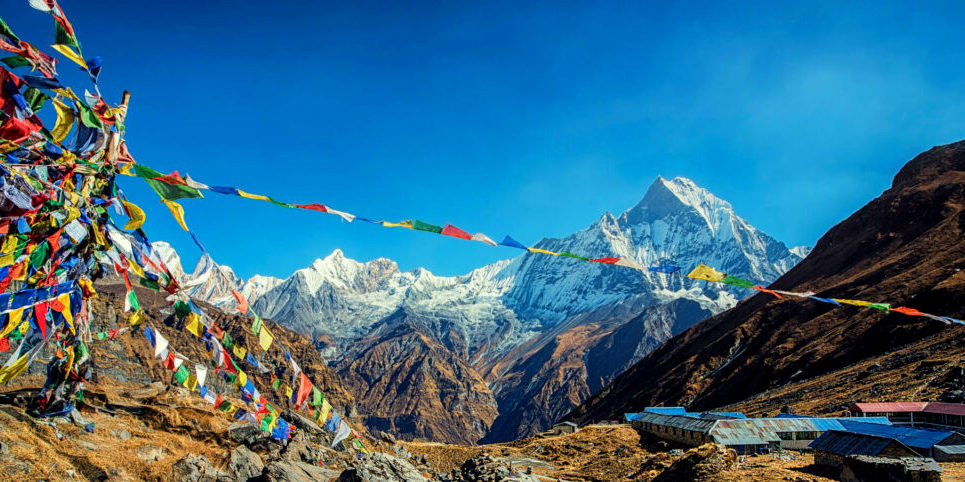Everest Base Camp Trek
The Everest Base Camp Trek is one of the most iconic and exhilarating journeys in the world, offering adventurers the chance to stand at the foot of the highest mountain on Earth, Mount Everest. This trek is not just about reaching a physical location; it's an epic journey into the heart of the Himalayas, filled with awe-inspiring landscapes, rich cultural insights, and a sense of achievement that lasts a lifetime.
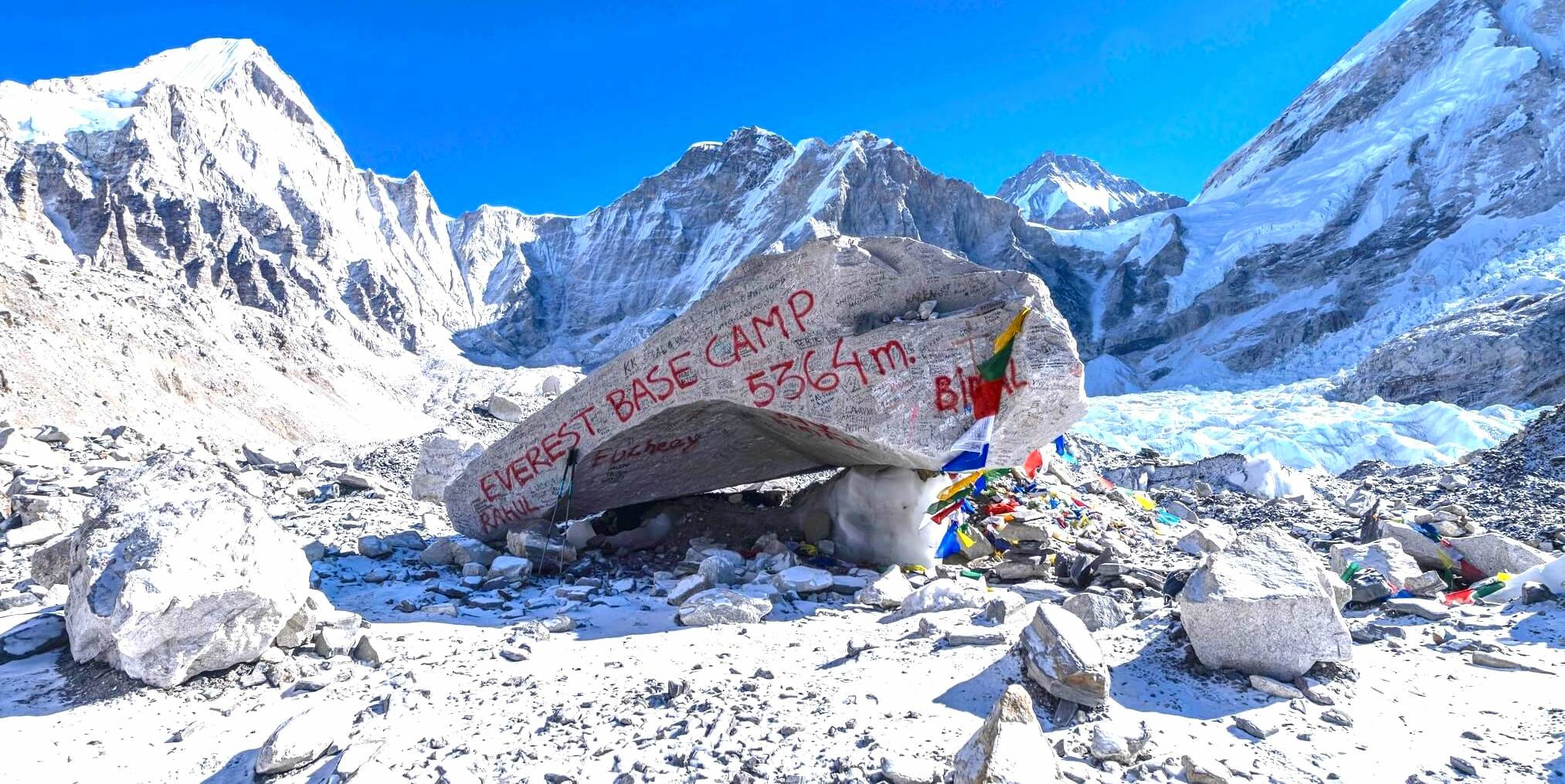
Overview
-
Duration: Typically 12-14 days
-
Starting Point: Lukla, accessible by a short flight from Kathmandu
-
Difficulty: Moderate to challenging, suitable for reasonably fit individuals
-
Altitude: Reaches up to 5,364 meters (17,598 feet) at Base Camp, with an optional hike to Kala Patthar at 5,545 meters (18,192 feet) for the best views of Everest
Highlights
-
Namche Bazaar: Often referred to as the gateway to the high Himalayas, this vibrant Sherpa town offers panoramic views of the surrounding mountains and is a great place for acclimatization.
-
Tengboche Monastery: Visit this spiritual site located in Tengboche, which offers stunning views of Everest, Ama Dablam, and other surrounding peaks. It's a vital cultural and religious center for the Sherpa community.
-
Kala Patthar: For many, the highlight of the trek is the challenging hike to Kala Patthar for sunrise. It provides the most accessible point to view Mount Everest from base to peak, along with spectacular views of the surrounding mountains.
-
Sherpa Culture: Experience the rich cultural heritage of the Sherpa people by visiting monasteries and museums and interacting with locals in traditional villages.
Challenges
-
Altitude Sickness: This is the most significant risk associated with the trek. Adequate acclimatization days are essential, and monitoring for symptoms of altitude sickness is critical.
-
Physical Demands: The trek involves long days of walking in often steep and rough terrain. Good physical condition is essential.
The Everest Base Camp Trek with Relax Getaways means you're choosing an experienced, reliable partner who will take care of all the logistics and support you need to safely and enjoyably reach one of the most iconic destinations on the planet. Whether you're a seasoned high-altitude trekker or looking to fulfill a bucket-list dream, the Everest Base Camp Trek promises to be a memorable adventure.
Annapurna Circuit Trek
The Annapurna Circuit Trek is a globally renowned trekking route in Nepal that encapsulates the incredible diversity of the Nepalese landscape and offers a profound cultural immersion into the lives of the communities living in the Annapurna region. Spanning a variety of ecosystems, from tropical at the start to high alpine at its highest points, and cultural diversity from Hindu villages at the low foothills to Tibetan culture in the higher Manang region, this trek provides an all-encompassing Himalayan trekking experience.
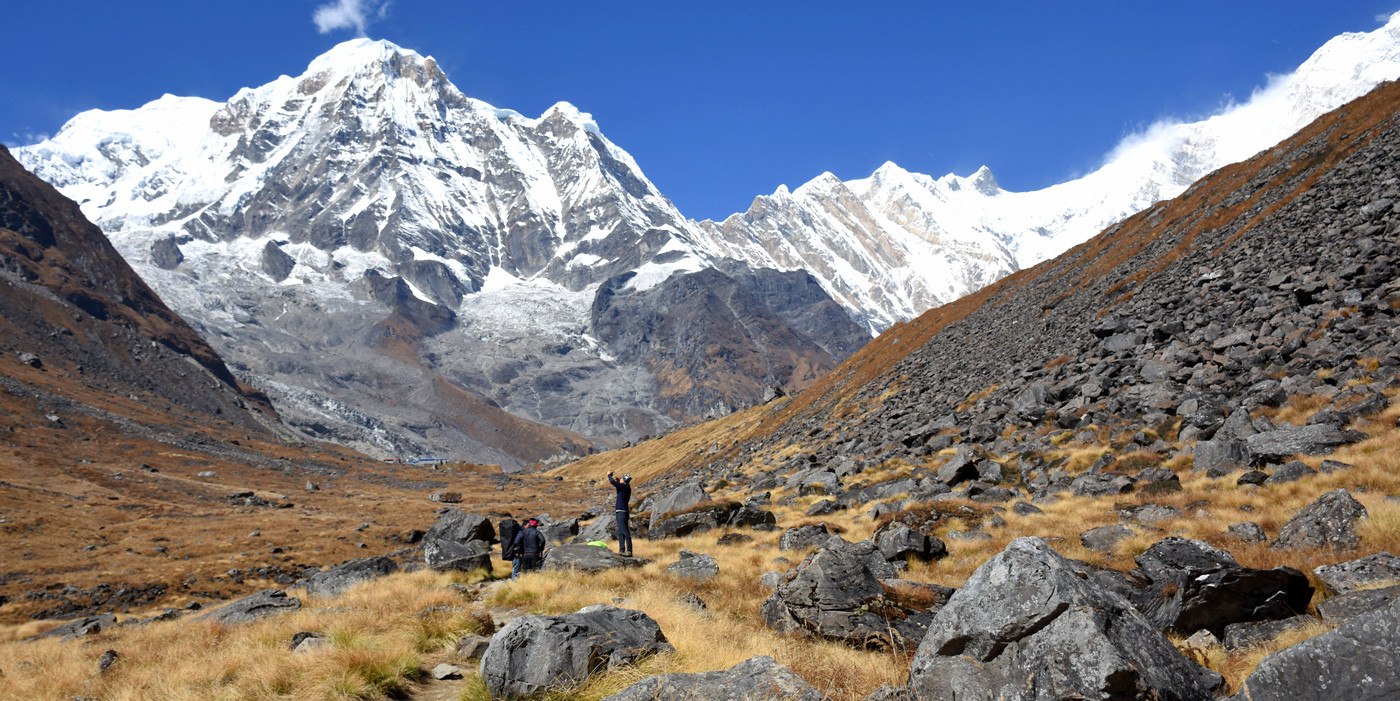
Overview
-
Duration: Typically 12-21 days, depending on the starting and ending points and variations in the itinerary.
-
Starting Point: Besisahar or Bhulbhule in the Marsyangdi River valley.
-
Difficulty: Moderate to challenging; suitable for trekkers who can handle multiple days of walking.
-
Altitude: The trek reaches its highest point at Thorong La Pass, at 5,416 meters (17,769 feet).
Highlights
-
Manang: A culturally rich village that serves as a crucial acclimatization stop. It offers breathtaking views and has several monasteries and a unique Himalayan lifestyle.
-
Thorong La Pass: Crossing this high mountain pass is one of the most challenging and rewarding aspects of the circuit, offering stunning views of the Annapurna massif and Dhaulagiri.
-
Muktinath: An important pilgrimage site for both Hindus and Buddhists, located beyond the Thorong La Pass. It is known for its eternal flame fed by natural gas underground.
-
Marpha: Famous for its apple orchards and local apple brandy, Marpha is a beautiful Thakali village with a distinctive culture.
-
Poon Hill: Though not on the classic circuit route, many trekkers opt to include a detour to Poon Hill for a sunrise view of the entire Annapurna range.
Challenges
-
Thorong La Pass: Weather conditions at Thorong La can be unpredictable and can change rapidly, which is a significant challenge in crossing the pass.
-
Physical Stamina: Due to the long duration and the demanding nature of daily hikes, physical fitness is crucial.
- Altitude Sickness: Like any high-altitude trek, there is a risk of altitude sickness, which can be mitigated by proper acclimatization.
Annapurna Circuit Trek with Relax Getaways ensures a meticulously planned itinerary that balances adventure with safety, helping you to fully experience one of the most diverse and scenic high-altitude treks in the world. Our expert local guides enrich your journey with insights into the natural and cultural heritage of the region, making your trek not just a journey through landscapes but also a passage through the living history and vibrant culture of Nepal.
Manaslu Circuit Trek
The Manaslu Circuit Trek is a remarkable journey that circles the eighth highest mountain in the world, Mount Manaslu, and offers a less crowded but no less stunning alternative to the more frequented treks in Nepal. This trek is renowned for its pristine mountain views, fascinating culture, and biological diversity, providing a more authentic experience of the Himalayas.
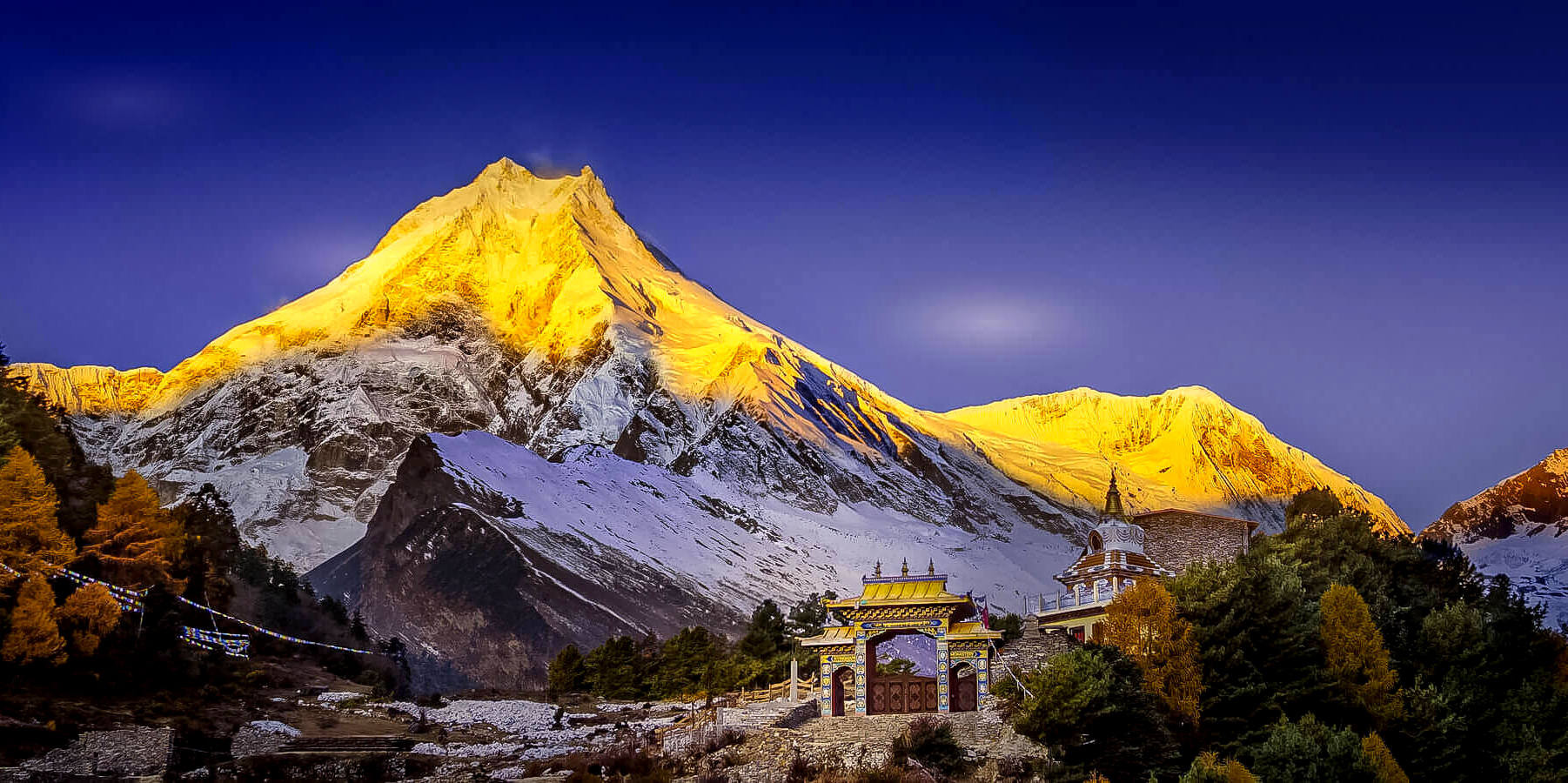
Overview
-
Duration: Approximately 14-20 days, depending on variations in the route and side trips.
-
Starting Point: Soti Khola, after a drive from Kathmandu.
-
Difficulty: Considered challenging due to its remote nature and less-developed trails.
-
Altitude: The highest point is the Larkya La Pass at 5,106 meters (16,752 feet).
Highlights
-
Spectacular Scenery: The trek offers views of Manaslu, as well as other peaks like Himalchuli, Ngadi Chuli, and Ganesh Himal.
-
Cultural Richness: The region is a melting pot of Nepali ethnic cultures, including Nubri and Tsum, where ancient Buddhist traditions are still practiced.
-
Larkya La Pass: Crossing this high pass is one of the most dramatic and challenging aspects of the trek, providing breathtaking panoramic views.
-
Remote Villages: Trek through authentic and less-visited villages, where you can see lifestyles that have remained unchanged for decades.
Challenges
-
Remoteness and Facilities: The trail is less developed, which means fewer amenities and basic teahouse accommodations.
-
Physical Demands: The trek involves long days of walking in rugged terrain, often at high altitudes, which requires good physical fitness.
-
Altitude Sickness: Proper acclimatization is crucial due to the high altitudes encountered, particularly near Larkya La Pass.
When trekking the Manaslu Circuit with Relax Getaways, you benefit from our deep local knowledge and commitment to sustainable travel practices. We ensure that every aspect of your trek is managed professionally, providing a safe and enriching journey through one of the most spectacular and culturally interesting areas of Nepal. Our experienced guides not only lead the way but also enhance your understanding of the local cultures and natural environment, making your Manaslu Circuit Trek a truly unforgettable experience.
Upper Mustang Trek
The Upper Mustang Trek offers a unique journey into the remote and ancient Kingdom of Mustang, often referred to as the Last Forbidden Kingdom. This area was isolated from the rest of the world until 1992, preserving a way of life that has remained almost unchanged for centuries and offering landscapes that resemble the Tibetan plateau more than the lush greenery of the rest of Nepal.
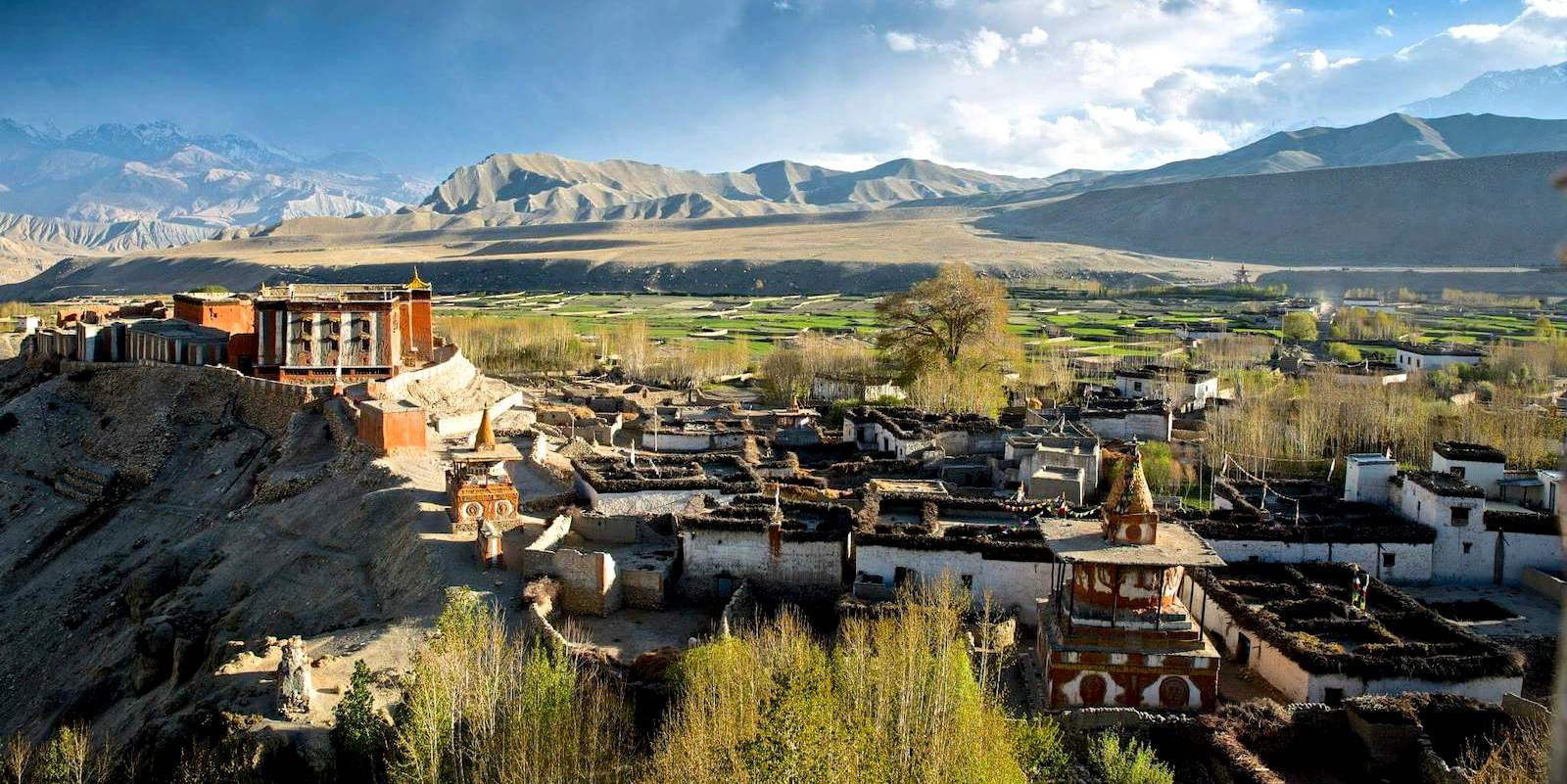
Overview
-
Duration: Typically around 10-14 days.
-
Starting Point: Jomsom, accessible after a short flight from Pokhara or a trek from the Annapurna region.
-
Difficulty: Moderate due to the altitude and arid conditions, but not technically challenging.
-
Altitude: The trek does not go extremely high, with Lo Manthang, the walled capital of Mustang, sitting at about 3,800 meters (12,467 feet).
Highlights
-
Lo Manthang: Explore the ancient walled city that once served as the capital of the Kingdom of Mustang. The city is home to palaces and important Tibetan Buddhist monasteries.
-
Unique Landscape: Traverse arid, desert-like landscapes with deep ravines and rock shelves set against a backdrop of stark cliffs and mountain peaks.
-
Tibetan Culture: Mustang is heavily influenced by Tibetan culture. You’ll encounter language, art, and religion that are almost purely Tibetan.
-
Festivals: Plan your trek during the Tiji Festival in Lo Manthang, a colorful and traditional Buddhist celebration.
Challenges
-
Remote Area: The remoteness of the area means that facilities along the trek are basic and limited.
-
Weather Conditions: Due to its high altitude and exposure, the area can be quite windy, particularly in the afternoon.
Trekking Upper Mustang with Relax Getaways offers a chance to witness a culture that has remained isolated for centuries, presenting a landscape and way of life that are unlike anything else in the world. Our expert guides, who are knowledgeable about the local culture and environment, will lead you through this mystical land, ensuring a safe and enriching trekking experience. Whether you're exploring the ancient monasteries, viewing the stark beauty of the landscape, or celebrating local festivals, the Upper Mustang Trek is a journey into a nearly untouched and mystical part of the Himalayas.
Kanchenjunga Base Camp Trek
The Kanchenjunga Base Camp Trek is an exhilarating journey to the base of the world's third highest peak, Kanchenjunga, located at the eastern edge of Nepal. This trek is less frequented than others in Nepal, offering a truly remote wilderness experience amidst some of the most spectacular mountain scenery on the planet.
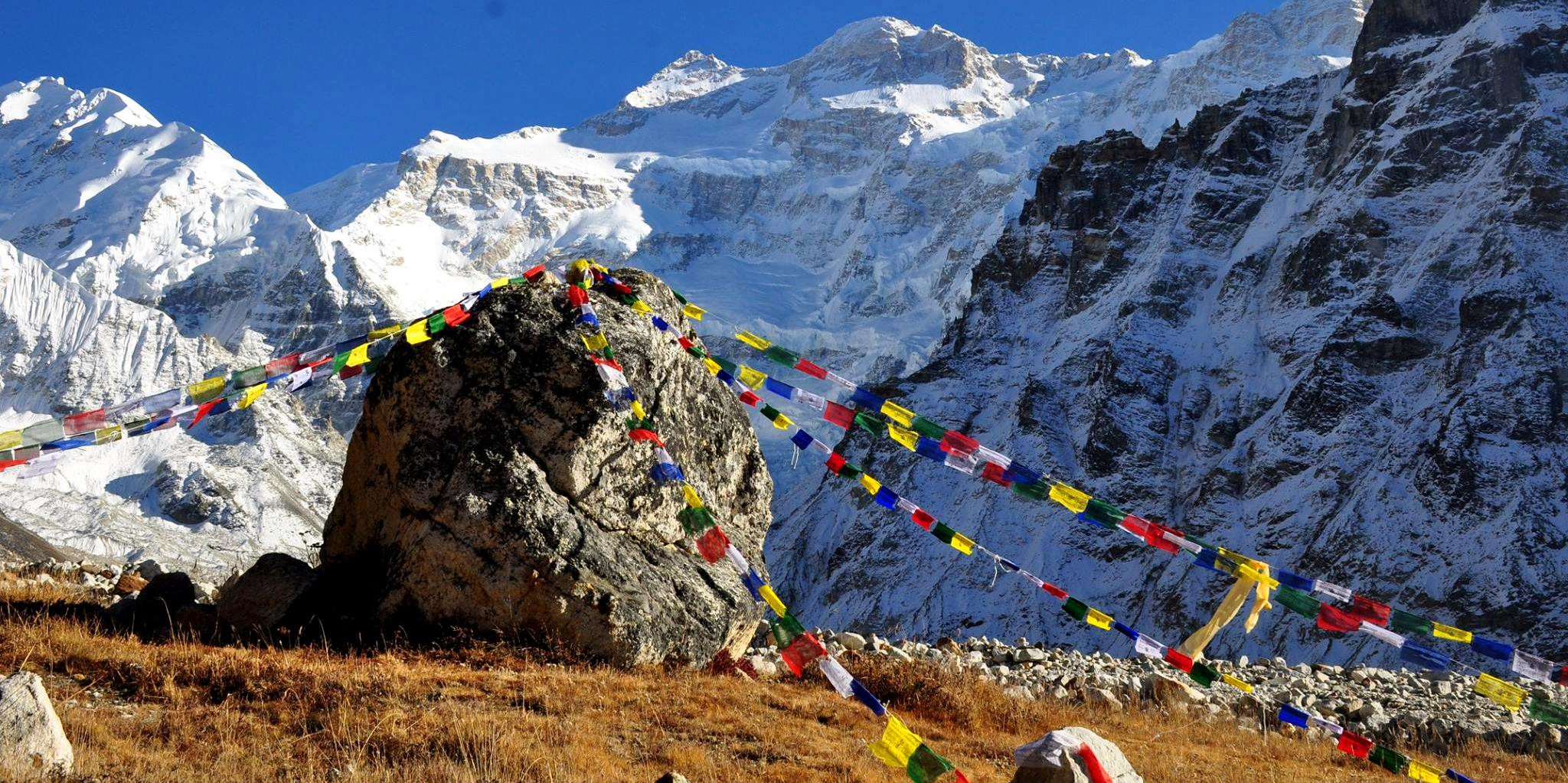
Overview
-
Duration: Approximately 14-24 days, depending on the chosen route and side trips.
-
Starting Point: Taplejung, accessible via a flight or a long drive from Kathmandu.
-
Difficulty: Challenging due to its length, remote nature, and rugged terrain.
-
Altitude: The trek reaches up to around 5,143 meters (16,873 feet) at Pangpema, the northern base camp of Kanchenjunga.
Highlights
-
Spectacular Mountain Views: Enjoy up-close views of Kanchenjunga, along with other high peaks like Jannu and Makalu.
-
Diverse Ecosystems: Traverse through tropical lowlands, lush rhododendron forests, and high alpine zones.
-
Remote Villages and Cultures: Experience the rich cultural heritage of the ethnic groups such as the Limbus and Sherpas who inhabit these areas.
-
Wildlife: The region is part of the Kanchenjunga Conservation Area, home to diverse wildlife, including snow leopards, red pandas, and Himalayan black bears.
Challenges
-
Remoteness: The trek's isolation means that rescue and medical facilities are far less accessible, and the trekking routes are less developed.
-
Physical Demand: Given the duration and the rough terrain, a high level of fitness and stamina is required.
-
Weather Conditions: The area can experience sudden weather changes, which can be challenging to manage.
The Kanchenjunga Base Camp Trek with Relax Getaways means choosing an adventure through some of the most pristine and spectacular landscapes in Nepal. Our experienced guides enhance the trek with their local knowledge, ensuring you have a safe, enjoyable, and deep cultural experience in one of the most breathtaking and untouched parts of the Himalayas. This trek is perfect for those who seek solitude and the challenge of navigating one of the world's most remote and beautiful mountain areas.
Tips for Top 5 High Altitude Treks in Nepal
High-altitude treks in Nepal, such as the iconic Everest Base Camp, Annapurna Circuit, Manaslu Circuit, Upper Mustang, and Kanchenjunga Base Camp treks, can be the adventure of a lifetime. These treks not only challenge your physical and mental endurance but also expose you to the stunning beauty and rich cultures of the Himalayas. To ensure a safe and enjoyable experience, here are essential tips to consider:
Physical Preparation
-
Training: Begin your fitness regimen at least 6 months in advance. Include cardiovascular exercises such as running, cycling, or swimming, and combine these with strength training, focusing on your legs, back, and core.
-
Hiking Practice: Engage in regular hiking sessions, preferably on varied terrain, and include some multi-day hikes to simulate the trek conditions.
Acclimatization
-
Schedule Wisely: Incorporate adequate acclimatization days into your itinerary. This is crucial for adjusting to high altitudes and reducing the risk of Acute Mountain Sickness (AMS).
-
Ascend Slowly: Avoid gaining altitude too quickly. A general rule is not to increase sleeping altitude by more than 500 meters (1,640 feet) per day once above 3,000 meters (9,840 feet).
Packing Essentials
-
Layered Clothing: Pack clothes that can be layered easily, allowing for quick adjustments based on weather changes. Include thermal layers, a waterproof jacket, and a down jacket.
-
Footwear: Invest in high-quality, well-fitting trekking boots that have been broken in. Also, pack several pairs of moisture-wicking socks.
-
Gear: Essential gear includes a sturdy backpack, a sleeping bag suitable for freezing temperatures, a headlamp, and trekking poles.
Travel Insurance
- High Altitude Coverage: Ensure that your insurance policy covers trekking up to at least 6,000 meters (19,685 feet) and includes emergency evacuation and hospital treatment.
Health and Safety
-
Stay Hydrated: Drink at least 3-4 liters of water daily to help with acclimatization.
-
Diet: Eat a balanced diet rich in carbohydrates, which is crucial at higher altitudes, even if appetite may decrease.
-
Know the Symptoms of AMS: Learn the symptoms of altitude sickness, which include headache, nausea, dizziness, and fatigue. Descend to a lower altitude if symptoms worsen.
Local Customs and Etiquette
-
Respect Local Culture: Be respectful of local customs, dress modestly, and always ask permission before taking photos of people.
-
Environmental Considerations: Carry out all your trash, use water sparingly, and avoid plastic bottles by using water purification methods.
Guides and Porters
- Hire Experienced Guides: Especially for remote treks like the Manaslu or Kanchenjunga Base Camp, hiring knowledgeable local guides and porters can enhance your experience and safety. They are invaluable for their local knowledge, language skills, and assistance in case of emergencies.
Legal and Logistical Preparations
-
Permits: Ensure all necessary permits are arranged well in advance. Many regions in Nepal require special trekking permits, especially the restricted areas like Upper Mustang and Manaslu.
-
Local SIM Card: Consider purchasing a local SIM card for better connectivity and to contact emergency services if needed.
Following these tips will help ensure that your high-altitude trek in Nepal is memorable for all the right reasons, allowing you to fully enjoy the breathtaking landscapes and rich cultural heritage of the Himalayas.
Ideal Time for Top 5 High Altitude Treks in Nepal
When planning high-altitude treks in Nepal, considering the seasonal variations is crucial for ensuring optimal experience and safety. Here's a general overview of what to expect during each season:
Spring (March to May)
-
Weather: The weather is generally clear and stable, with moderate temperatures. This is one of the best times for high-altitude trekking as the skies are usually clear, offering excellent visibility.
-
Environment: Lower elevations burst into bloom with rhododendrons and other flora, making trails vibrant and colorful.
-
Considerations: This is a popular season, so trails can be busier, especially in well-known trekking routes.
Summer / Monsoon (June to August)
-
Weather: This season is marked by heavy rains due to the monsoon, which can result in slippery trails and increased risk of landslides in certain areas. However, temperatures are warmer.
-
Environment: The landscape is lush and green, waterfalls are at their most spectacular, and the air is clean and fresh after rains.
-
Considerations: Visibility may be reduced due to cloud cover and fog, especially at higher altitudes. Some regions that lie in rain-shadow areas remain relatively dry and can be suitable for trekking.
Autumn (September to November)
-
Weather: Post-monsoon brings a return to stable and clear weather, making this the most popular trekking season in Nepal. Temperatures start to cool, especially at higher altitudes.
-
Environment: The clear skies provide magnificent views of the Himalayan range, and the cooler temperatures make for comfortable trekking conditions.
-
Considerations: Being the peak trekking season, trails can be crowded. It’s a great time for photography and enjoying panoramic mountain vistas.
Winter (December to February)
-
Weather: Winter in high-altitude areas is cold with temperatures often dropping below freezing. Snowfall is common at higher elevations, which can obstruct some trekking routes.
-
Environment: The landscapes are generally quieter, and snow-covered mountains offer a different kind of beauty.
-
Considerations: Fewer trekkers are on the trails, providing a more solitary experience. However, preparation for extreme cold and potential route changes due to snow is essential.
Choosing the right season depends largely on your preference for weather conditions, your ability to handle cold or wet weather, and your desire for solitude versus sharing the trails with other trekkers. Each season offers a unique perspective of Nepal's mountainous beauty and challenges.
Setting off on any of the top 5 high-altitude tours in Nepal gives a mix of stunning scenery and lively cultural interaction. Every hike guarantees unforgettable experiences and life-changing discoveries—whether you prefer the demanding routes of Everest Base Camp, the varied Annapurna Circuit, the remote Manaslu Circuit, the mystical Upper Mustang, or the isolated Kanchenjunga Base Camp. Proper planning is necessary, including selecting the right season, getting physically ready, and correctly outfitting. Further enhancing the experience is the respect of local customs and the surroundings—that makes every expedition a particularly deep exploration into the heart of the natural and cultural beauty of Nepal. Whether done alone or with a guide, these hikes motivate and inspire, exposing deep truths and long-lasting memories.
FAQs for Top 5 High Altitude Treks in Nepal
Q: What is the best time to go on high-altitude treks in Nepal?
A: The optimal trekking seasons are the pre-monsoon spring months of March to May and the post-monsoon autumn months from September to November. These periods offer stable weather, clear skies, and moderate temperatures.
Q: Do I need a guide for high-altitude treks in Nepal?
A: Yes, for most high-altitude treks, especially in remote areas like Manaslu and Upper Mustang, having a guide is mandatory due to government regulations. Guides also provide invaluable local knowledge and emergency support.
Q: How should I prepare physically for a high-altitude trek?
A: Begin training at least 6 months in advance with cardiovascular exercises such as running, cycling, or swimming, and strength training focusing on legs, core, and back. Practicing hikes with a backpack is also recommended.
Q: What are the risks of high-altitude trekking?
A: The main risks include acute mountain sickness (AMS), which can lead to more severe conditions like HAPE or HACE if ignored. Other risks include weather-related issues and potential injuries.
Q: What gear do I need for a high-altitude trek in Nepal?
A: Essential gear includes a durable backpack, sturdy trekking boots, a warm sleeping bag, layered clothing, a waterproof jacket, hat, gloves, sunglasses, trekking poles, a water purification system, and a first-aid kit.
Q: How do I manage altitude sickness during the trek?
A: Proper acclimatization, a slow ascent, and hydration are crucial. Be aware of the symptoms of altitude sickness and descend if they worsen. Consider preventative medication like Acetazolamide under a doctor’s guidance.
Q: Are there any cultural considerations I should be aware of?
A: Respect local customs by dressing modestly, asking for photo permissions, and showing reverence at religious sites. Learning basic local phrases can enhance cultural interaction.
Q: How much does it cost to trek in Nepal?
A: Costs vary by trek and service level, generally including permits, guide and porter services, transport, accommodation, and meals. Prices typically range from $1,000 to $3,000 for organized treks.
Q: Can I trek solo in Nepal?
A: Solo trekking is permissible in many areas, but some regions require a guide or a group due to their restricted status. Always check the latest regulations before planning your trek.
Q: What kind of accommodations can I expect on these treks?
A: Accommodations range from basic teahouses providing essentials to more comfortable lodges in popular areas. Remote treks may offer more basic options with fewer amenities.
For the Nepal tour, please click here.
If you are looking for different kinds of Nepal Tours or Trekking Packages, feel free to contact us.
